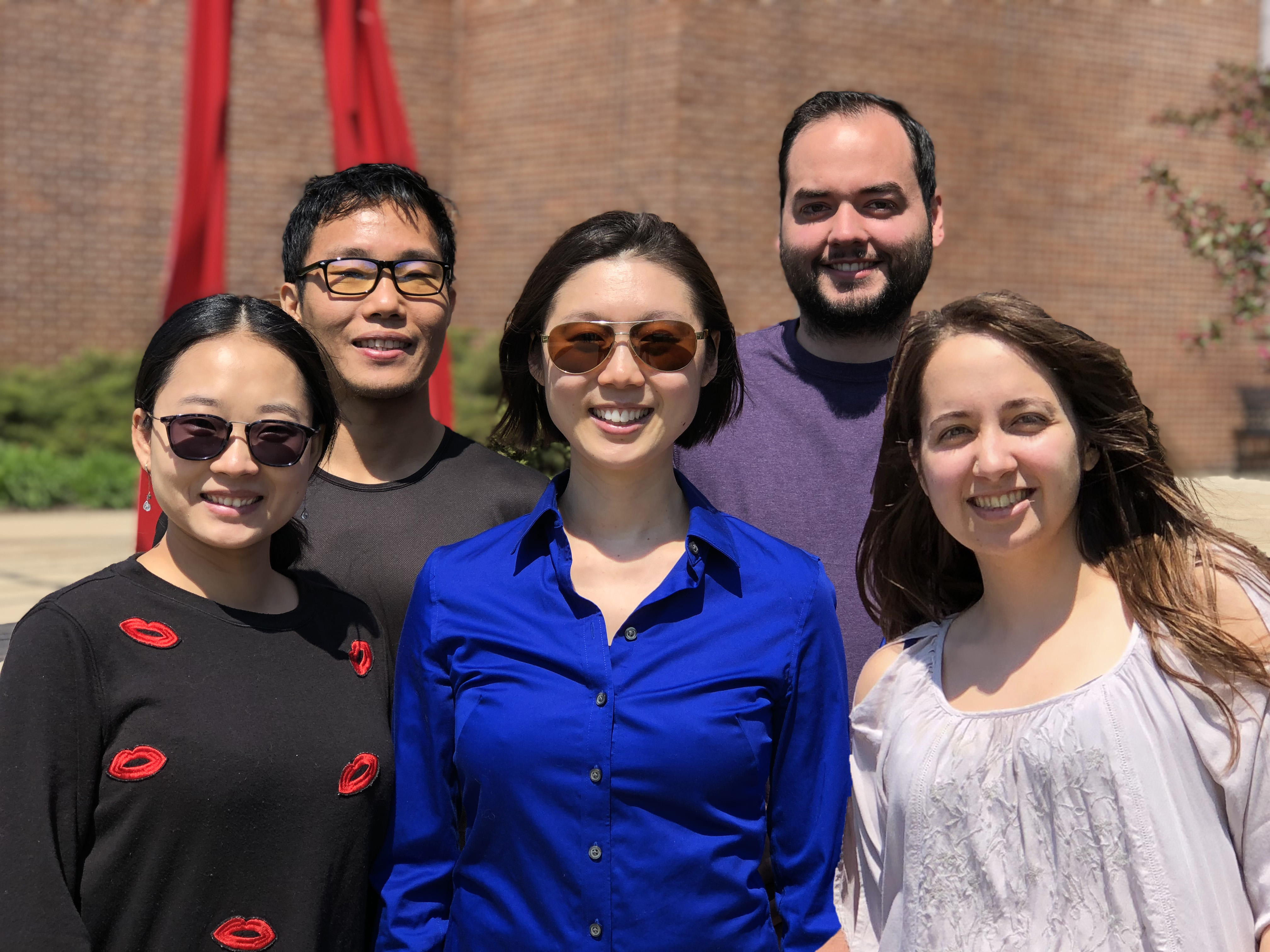Breast Cancer
Metabolomic Targeting of Heterogeneous Breast Cancer for Personalized Therapy Development



Posted March 17, 2021
Sophia Lunt, Ph.D. and Eran Andrechek, Ph.D., Michigan State University

Dr. Sophia Lunt and her research team at Michigan State University
A single therapeutic strategy is not effective for all breast cancer patients given the heterogeneity in morphology, receptor status, and gene expression profiles of breast cancer subtypes. Claudin-low and basal-like breast cancers are two subtypes that are predominantly classified as triple-negative breast cancer (TNBC) due to a lack of expression of estrogen, progesterone, and human epidermal growth factor receptors, and are associated with an unfavorable prognosis of aggressive and metastatic disease. Moreover, these subtypes are frequently unresponsive or resistant to standard cancer therapies, indicating a need for targeted therapies to improve patient outcomes. In recent decades, cancer-related metabolomics (i.e., the analysis of metabolites that change during cellular metabolism) has been explored as a way to identify promising diagnostic biomarkers and therapeutic targets. With a Fiscal Year 2014 Breast Cancer Research Breakthrough Award – Funding Level 1 – Partnering PI option, Drs. Sophia Lunt and Eran Andrechek sought to define the metabolic profiles of claudin-low and basal-like breast cancers as a strategy for identifying metabolic-targeting drugs most likely to be effective against each subtype.
In a recent publication in Cellular Oncology, Dr. Lunt and her research team investigated subtypes of primary tumors from a transgenic mouse model that recapitulates the heterogeneity found in human breast cancer. One tumor subtype, termed epithelial-mesenchymal transition (EMT), corresponded most similarly to the claudin-low subtype. Cellular metabolomic analysis showed that EMT tumor cells exhibited increased glutathione biosynthesis and glucose flux through the tricarboxylic acid (TCA) cycle, which are important for antioxidant and energy generation, respectively. A second subtype, termed papillary, exhibited myolocytomatosis (Myc) oncogene amplification and was most similar to basal-like breast cancer. Analysis of papillary tumor cell metabolism demonstrated increased de novo nucleotide biosynthesis, which is necessary for DNA and RNA synthesis during rapid proliferation.
The research team next assessed whether metabolism-targeting drugs can affect cell proliferation in a subtype-specific manner. The team selected inhibitors of the three pathways that were differentially regulated in each subtype: buthionine sulfoximine (BSO), an inhibitor of glutathione biosynthesis; CPI-613, an inhibitor of the TCA cycle; and 5-fluorouracil (5FU), an inhibitor of de novo nucleotide biosynthesis. They found that targeting glutathione biosynthesis with BSO or the TCA cycle with CPI-613 more effectively inhibited proliferation of EMT tumor cells compared to papillary tumor cells. They also determined that targeting nucleotide biosynthesis with 5FU was most effective in inhibiting proliferation of papillary tumor cells.
In a subsequent publication in Cancer Research, Dr. Lunt and her team expanded upon their findings to further define subtype-specific preferences in nucleotide biosynthesis pathways between papillary and EMT tumors. The papillary subtype exhibited enriched utilization of de novo nucleotide biosynthesis, while the EMT subtype exhibited preferential utilization of nucleotide salvage pathways. Further, examining patient datasets revealed that high expression of de novo biosynthesis genes correlated with worse clinical outcomes in human breast cancer patients with luminal (estrogen- and progesterone-receptor positive) breast cancer, while high expression of nucleotide salvage pathway genes was associated with worse outcomes across all breast cancer types. Importantly, knocking out the preferred metabolic nucleotide biosynthesis pathway slowed tumor growth in both papillary and EMT tumor-bearing mice in a subtype-specific manner.
Targeting altered metabolic processes addresses an urgent need for precise and effective treatments for TNBC. Dr. Lunt’s recently published work demonstrate the utility of targeting breast cancer subtype-specific metabolic pathway changes as a way to selectively inhibit cancer cell proliferation. In addition, data generated by this award provides evidence for using metabolic profiles of breast cancer subtypes as a prognostic indicator to guide treatment decisions, which will ultimately improve patient outcomes for those with difficult to treat TNBCs.
Publications:
Ogrodzinski MP, Teoh ST, and Lunt SY. 2020. Metabolomic profiling of mouse mammary tumor-derived cell lines reveals targeted therapy options for cancer subtypes. Cellular Oncology 43(6):1117-1127. https://link.springer.com/article/10.1007%2Fs13402-020-00545-1
Ogrodzinski MP, Teoh ST, and Lunt SY. 2021. Targeting subtype-specific metabolic preferences in nucleotide biosynthesis inhibits tumor growth in a breast cancer model. Cancer Research 81:303-314. https://pubmed.ncbi.nlm.nih.gov/33115804/
Link:
Last updated Friday, December 13, 2024














